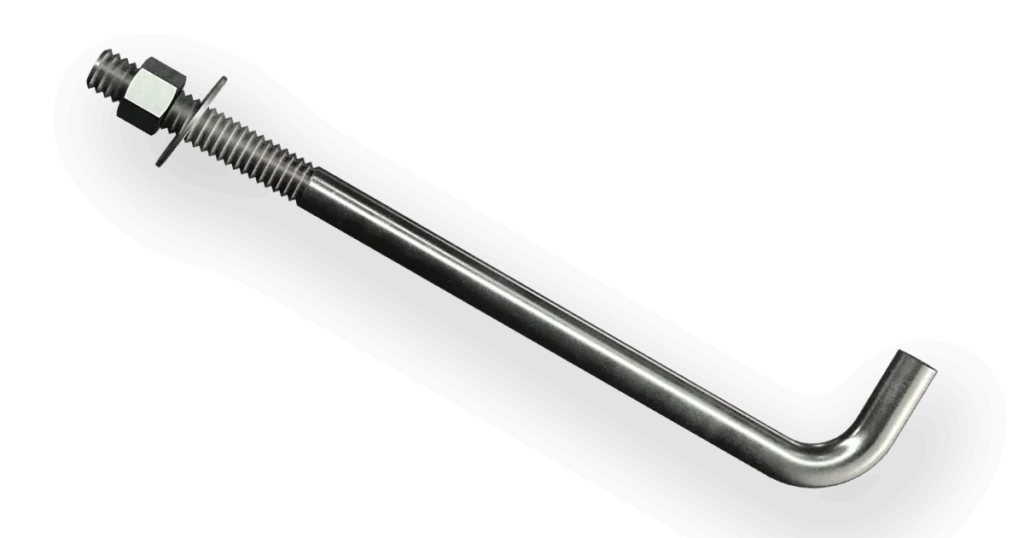L-shaped anchor bolts are essential components in construction, securing structural elements to concrete foundations. These bolts provide stability and strength to buildings, bridges, and other infrastructure projects, ensuring long-term durability. This guide explores their applications, benefits, and key considerations when selecting and installing L-shaped anchor bolts/ baut – mur.
What Are L-Shaped Anchor Bolts?
L-shaped anchor bolts are steel fasteners with a 90-degree bend at one end, forming an “L” shape. This design enhances their grip within concrete, preventing pullout under heavy loads. They are commonly used to secure structural columns, light poles, heavy machinery, and other critical installations.
Applications of L-Shaped Anchor Bolts
L-shaped anchor bolts are widely used across various industries, including:
Construction: Securing steel columns, beams, and frameworks to concrete foundations.
Infrastructure Projects: Used in bridges, tunnels, and highway structures for added stability.
Industrial Installations: Anchoring heavy machinery and equipment in manufacturing plants.
Residential and Commercial Buildings: Fixing support structures such as awnings, fences, and railings.
Utility Poles and Signage: Providing stability to streetlights, traffic signals, and large outdoor signs.
Benefits of L-Shaped Anchor Bolts
The unique design of L-shaped anchor bolts offers several advantages:
Superior Load Resistance
The bent end of the anchor bolt prevents it from being pulled out of the concrete, ensuring strong resistance against tension and shear forces.
Durability and Corrosion Resistance
Available in stainless steel, galvanized steel, and other corrosion-resistant materials, L-shaped anchor bolts withstand harsh environmental conditions.
Versatility
These bolts are adaptable for a wide range of applications, from small residential projects to large-scale industrial and commercial constructions.
Compliance with Industry Standards
Manufactured to meet ASTM and other industry specifications, L-shaped anchor bolts ensure compliance with structural safety regulations.
Choosing the Right L-Shaped Anchor Bolts
Selecting the appropriate anchor bolts is crucial for structural integrity. Consider the following factors:
- Material Selection
Carbon Steel: Suitable for general construction applications.
Stainless Steel: Ideal for corrosion-prone environments.
Galvanized Steel: Provides added protection against rust and moisture.
- Bolt Size and Length
The diameter and length of the anchor bolt should match the load requirements and the depth of the concrete foundation.
- Load Capacity
Ensure the selected bolt can withstand the expected tension and shear forces. Consult engineering guidelines or structural specifications.
- Thread Type and Length
The threading on the anchor bolt should be compatible with the nuts and washers used in the assembly.
Proper Installation of L-Shaped Anchor Bolts
Correct installation is vital to achieving the full strength and stability of L-shaped anchor bolts. Follow these key steps:
- Pre-Installation Planning
- Verify the design specifications and load requirements.
- Ensure the concrete mix meets the required strength.
- Prepare necessary tools and materials.
- Positioning the Anchor Bolts
- Securely place the bolts within the formwork before pouring concrete.
- Maintain proper alignment and spacing according to structural plans.
- Pouring Concrete
- Carefully pour concrete around the anchor bolts.
- Avoid displacing the bolts during the process.
- Allow sufficient curing time for the concrete to set.
- Post-Installation Checks
- Inspect the alignment and positioning after concrete curing.
- Ensure proper bolt threading for secure attachment.
- Tighten nuts and washers as per torque requirements.
Common Issues and Troubleshooting
Even with careful installation, some issues may arise. Here’s how to address them:
- Misaligned Bolts
- Use a rebar template during installation to maintain alignment.
- If misalignment occurs, consider using epoxy anchors or retrofit solutions.
- Insufficient Embedment Depth
- Verify embedment depth before pouring concrete.
- If depth is insufficient, alternative anchoring methods may be required.
- Corrosion and Rust
- Choose corrosion-resistant materials for outdoor or humid environments.
- Apply protective coatings or use galvanized bolts for extended durability.
Conclusion
L-shaped anchor bolts play a critical role in securing structures to concrete foundations, providing strength, stability, and long-term reliability. Selecting the right materials, following proper installation techniques, and addressing potential issues ensure optimal performance in various applications. Whether for residential, commercial, or industrial use, investing in high-quality anchor bolts enhances the structural integrity and safety of any project.
By understanding the benefits and best practices for using L-shaped anchor bolts, professionals tokohasil in the construction and building industry can make informed decisions, ensuring the longevity and stability of their structures.


